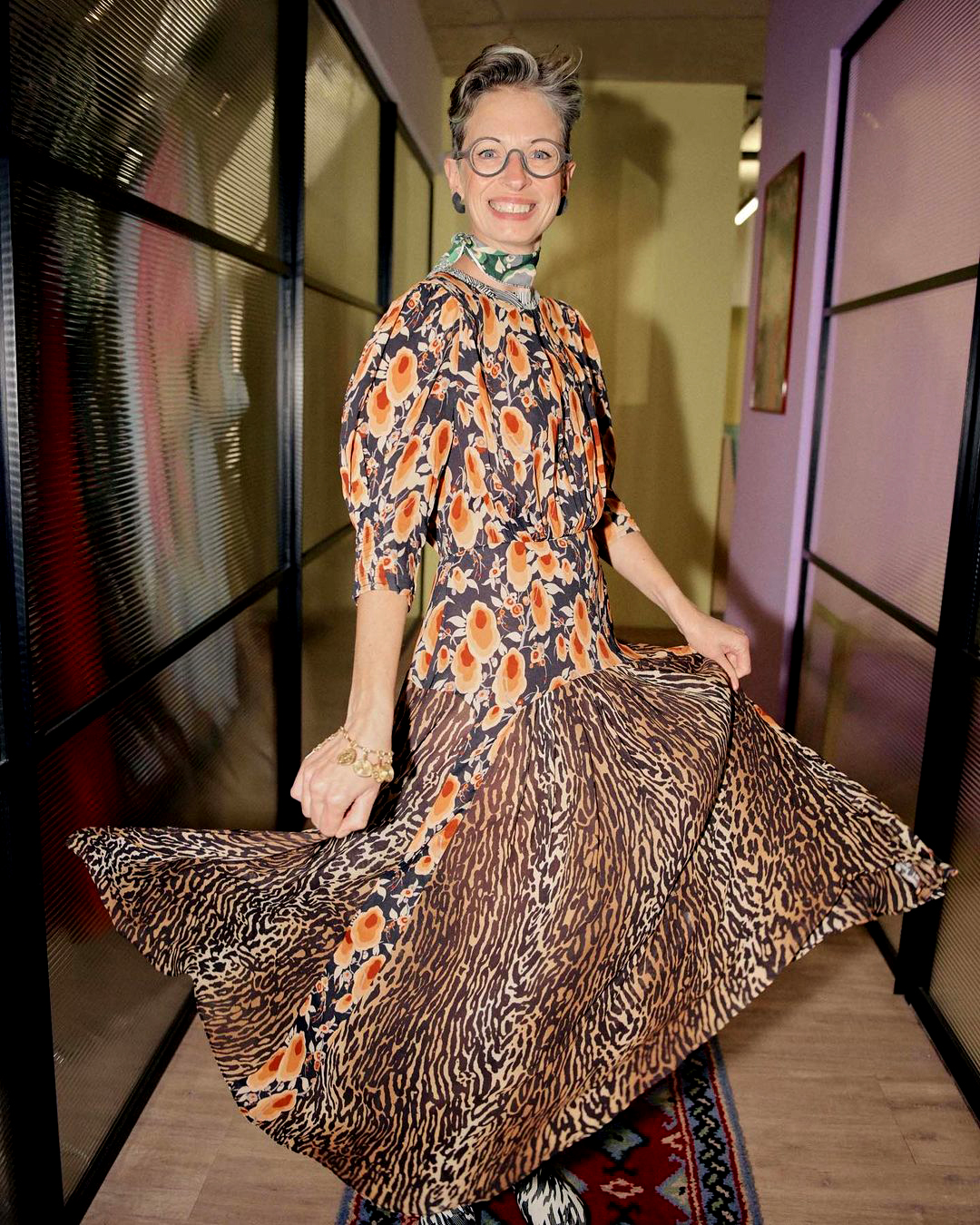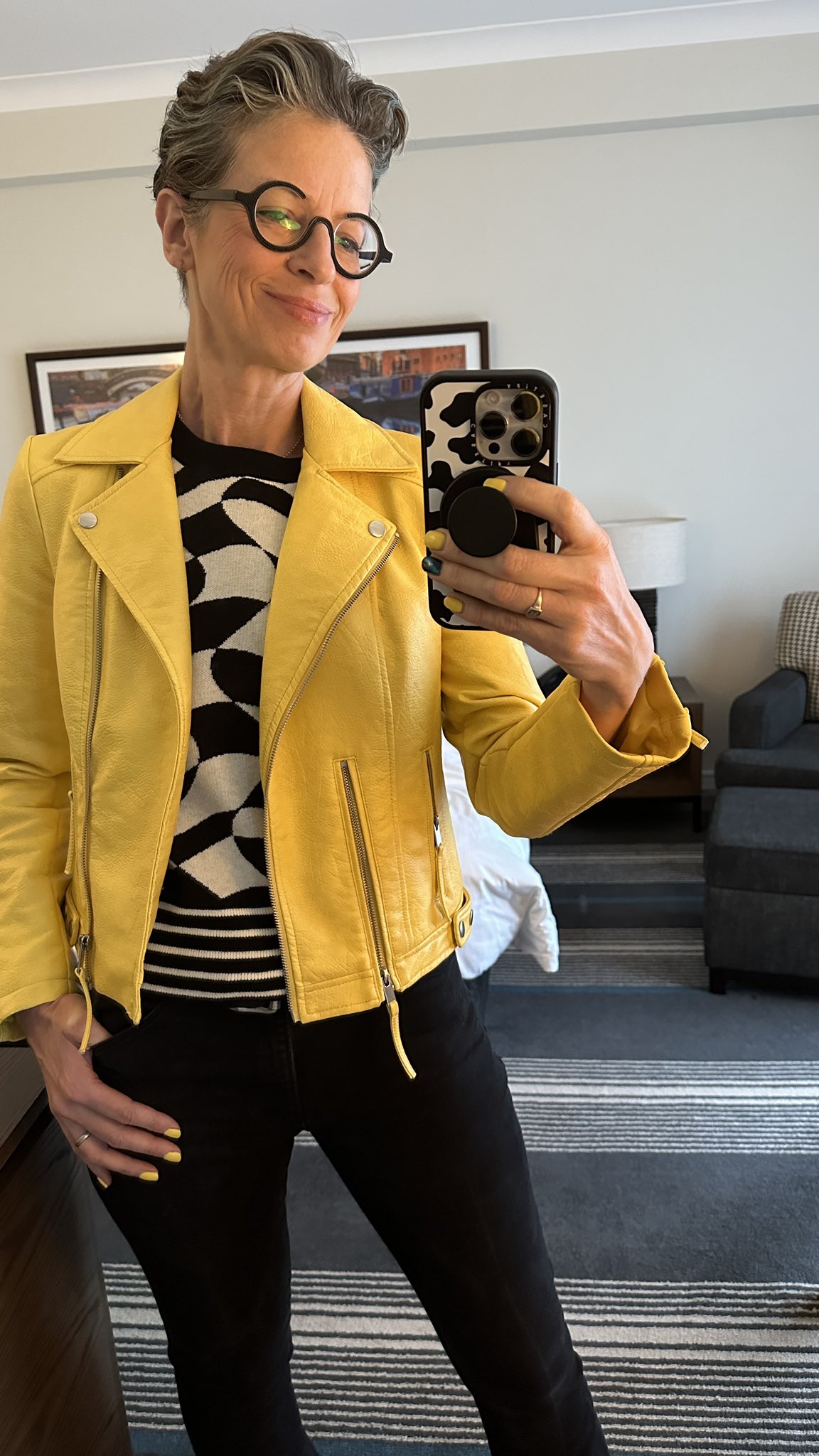8 tips for (re)finding your personal style following mastectomy

Liz wearing Rixo
Regular readers (and listeners) might remember Dr Liz O’Riordan. The consultant breast surgeon’s world turned upside-down in 2015 when, aged 40, she was diagnosed with breast cancer. She joined me on the podcast last year to talk about her experience; from diagnosis, to treatment and recovery. Whilst chatting we spoke briefly about the impact that having a mastectomy has had on how she feels about her body (Liz doesn’t have a left breast and doesn’t wear a prosthetic) and how she’s had to adapt her personal style to offset the loss of a breast. At the time I made a note to come back to this as there seems to be very little personal and practical advice out there concerning the challenges of dressing post-mastectomy.
‘It can be very hard coming to terms with a new body shape and image after a mastectomy,’ she tells me. ‘It’s not just the the missing breast(s) that can affect what you wear. For some women, breasts hide a tummy below, their absence can make it seem a larger. Unless you’re very slim, there might also be a noticeable bulge at the side where the breast used to merge into the soft tissue below your armpit. These can create odd shapes under clothes if a prosthesis isn’t worn. In the beginning I would cry as I walked around department stores with my shoulders hunched over, desperately looking for something that might disguise my uni-boob. I wanted to hide in huge baggy jumpers that often exacerbated the asymmetry. Eventually, I realised that no-one is really looking at me. I had to learn to love my body again and to wear what made feel good instead of worrying what other people thought. Time is a great healer. Now, I wear what I want.’

Credit: Liz Twitter @Liz_ORiordan
Here Liz O’Riordan shares eight tips and ideas for post-mastectomy dressing:
When it comes to mastectomy bras, they have to be full cupped to hold a prosthesis flat against the chest wall. This means that plunging necklines and anything low-cut will show the bra underneath (I struggled with this as a lot of my pre-cancer dresses had V-necks). An alternative is to wear a modesty panel or cleavage cover that clips on to a bra.
I found hot-weather dressing really hard. Many mastectomy bras have wide straps – flimsy, lacy things won’t hold the weight of a prosthesis – which means that the bra will show under strappy dresses. Instead I wear light vest tops underneath – in black, navy or white. Ones that contain a lot of Lycra don’t ride up and create wrinkles as I go about my day. Also useful are those old-fashioned dress slips (like granny used to wear) that I found at good ol’ M&S.
Wearing a shawl, scarf or bolero over a strappy dress will hide the bra, yet this adds another layer of clothing that may not be ideal when the hot flushes come (due to hormonal changes) – or if the weather is particularly hot and humid. Experiment with what works for you since layers are good for both (body)form and function.
If you choose to go without a bra or a prosthesis, this presents different challenges. As a small-breasted woman, I’m lucky that I can go bra-less, but I would recommend nipple covers (fabric and silicone). There are no one-sided bras that I know of to support single breasts sans prosthesis. Although it can be pricey, companies like Buttress & Snatch can make a custom bra for you.
Re-addressing the (dis)proportion issue… Tops with a fussy neckline can distract the eye: straps that tie in a bow or hang down, ruching, gathering or piping along a centre row of buttons. My dream top for hiding asymmetry has ruffles or flounces (sadly, every time I’ve found one I liked, the ruffle was on the wrong side – designers take note!). If you don’t wear a prosthesis, avoid wrap necklines as they gape terribly on the flat side. I’ve moved towards floaty, breathable fabrics (hot flushes again) and experimented with bolder colours and patterns for more smoke’n’mirrors distraction. Loose and drapey layers are also good.
There are days when I have cleavage envy, especially at parties when everyone glams up and I struggle to feel sexy. It’s much harder to find occasion wear now. Tailored clothing like fitted dresses and jackets – or anything with an obvious dart – can be difficult to wear because what can’t be filled out is more obvious. Wearing waistcoats or open shirts and blouses works well. Generally, I avoid strapless, stretchy dresses as they tend to fall down without two breasts. If you really love a fancy dress, a corset-style top – if it’s tight enough and has some boning or shaping – can disguise a mastectomy as long as the material sits close to the chest at the top. Instead, I love a jumpsuit. There’s no faffing about finding a top that goes with a pair of trousers or a skirt, and no worrying about tights. Jumpsuits are a funky alternative to both day or occasion dressing and there are some very smart, dressier versions in velvet or sequin fabrics out now.
A huge necklace becomes a talking point instead of the clothes I’m wearing. I look for closer-to-the-neck style statements, rather than once loved longer pendants. I gave mine away because without two breasts to keep a pendant in the middle, they just become a nuisance. While I’m not a scarf person, these can be great in diverting the eye from a flat chest and adding a splash of colour to your outfit.
I also focus on earrings and lipstick – or bold glasses and hairstyles – to draw the attention to my face, not my chest. When my hair grew back grey, some colours just didn’t suit my skin-tone anymore. Like Alyson, I had to change a lot of my wardrobe and makeup. I like contrasts so [clothing-wise] I stick to black, white, and navy with a pop of yellow or orange or green.
You can find Liz over on her website HERE and instagram HERE. You can pre-order a copy of her new book HERE.
That’s Not My Age is supported by its audience. When you purchase through links on our site, we may earn commission on some of the items you choose to buy.

That was such a fantastic interview Alyson. I listened to it several times.